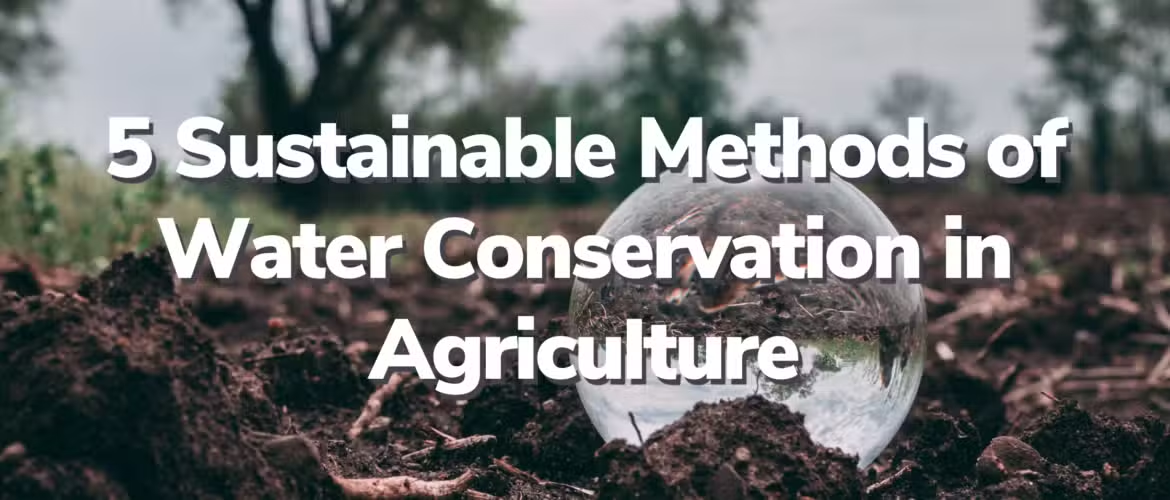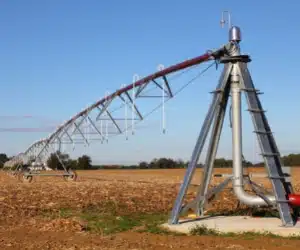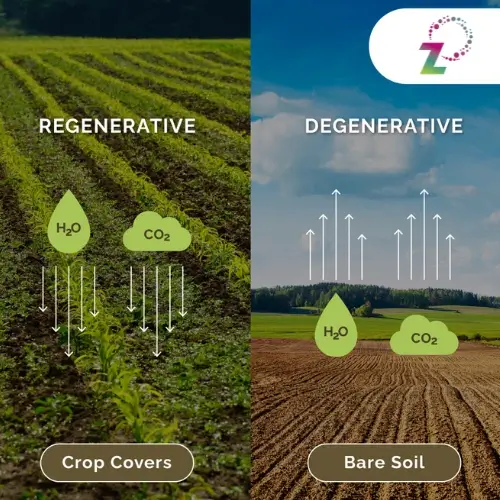
5 Sustainable Methods of Water Conservation in Agriculture
Water is the lifeblood of agriculture, essential for crop growth, productivity and farm sustainability. In many regions, up to 70% of freshwater is directed towards irrigation. However, with increasing demands and environmental challenges, efficient water management is more crucial than ever. For farmers, optimising water use not only preserves this vital resource but also enhances productivity and resilience.

Why are water resources under pressure?
Only 3% of the water on Earth is freshwater. Of this (already small) percentage, only 0.5% is readily accessible and fit for drinking. The remaining 2.5% is too polluted for any form of consumption or is locked away in glaciers, ice caps, atmospheric vapour, soil, or beneath the Earth’s crust.
The following factors place even more pressure on scarce water resources:
- The world’s population is steadily increasing, leading to higher demand for water for drinking, sanitation, and agriculture.
- Rapid urbanisation results in the expansion of cities and the development of infrastructure, which often leads to increased water consumption.
- Climate change is altering precipitation patterns, leading to more frequent and severe droughts in some regions and increased rainfall and flooding in others.
- Inefficient water use practices, such as over-extraction of groundwater, inefficient irrigation techniques, and pollution of water bodies, contribute to the depletion and degradation of water resources.
- The expansion of agricultural land and intensification of farming practices also contribute to increased water demand and pressure on water resources.
- Pollution from industrial discharges, agricultural runoff, untreated sewage, and other sources contaminates water bodies, making them unfit for human consumption and ecological health.
You can see why it’s becoming ever-more important for farmers to do what they can to reduce pressure on limited water supplies and mitigate the impacts of water scarcity on both agricultural production and ecosystems.
Let’s explore five practical methods of water conservation tailored for agricultural settings:
1. Micro-irrigation for precision water delivery
Traditional irrigation methods often lead to water wastage through runoff and evaporation. Micro-irrigation systems offer a solution by delivering water directly to the root zone of plants. Drip and sprinkler systems ensure precise water application, minimising waste and maximising plant uptake. This technology can also be made accessible to smallholder farmers for vegetable and cash crop production.
2. Mulching for soil protection and moisture retention
Mulching involves covering the soil surface with organic materials like straw, wood chips, or compost. This practice acts as a protective barrier, reducing soil erosion and retaining moisture. By preventing direct sunlight and wind exposure, mulch slows down water evaporation, keeping the soil consistently moist. Study results indicate that moderate to high application rates of organic mulch can significantly enhance soil moisture conservation, making it a valuable tool for water conservation on farms.
3. Cover crops for erosion control and soil health
Cover crops, planted between cash crops, play a vital role in soil conservation and water retention.
- Cover crops can increase rainfall infiltration to the soil layer by more than six-fold, leading to decreased runoff and thus less erosion risk.
- Extensive root systems help bind soil particles together, reducing erosion caused by wind and water.
- Cover crops also improve soil structure and increase organic matter content, enhancing water infiltration and retention.
These improved soil water and soil structural conditions benefit agricultural crop production.

4. Water management technology
Advancements in technology have revolutionised water management on farms. Adoption of water management technology has been shown to significantly reduce water consumption and improve crop yields, benefiting both the environment and farm profitability. For example:
- Soil moisture sensors allow farmers to monitor soil moisture levels in real-time, enabling precise irrigation scheduling
- Automated irrigation systems can be programmed to deliver water at specific times and rates
- Aligning irrigation with crop water requirements optimises water use and minimises waste
5. Regenerative practices building soil health for water conservation
Regenerative farming practices focus on enhancing soil health as a fundamental strategy for water conservation.
Farmers can improve soil structure and water-holding capacity through regenerative farming methods such as:
- Minimising tillage
- Incorporating organic matter and increasing soil organic carbon levels
- Promoting biodiversity
- Using cover crops
These practices promote healthy soils. And healthy soils act as reservoirs, storing water during periods of excess rainfall and releasing it during dry spells. By prioritising soil health, farmers can improve water infiltration and retention, and conserve water resources while building resilient and sustainable farming systems.
Interested in these water conservation methods in agriculture?
Implementing these five methods of water conservation in agriculture can empower farmers to optimise water use, enhance farm productivity, and mitigate environmental impacts. We encourage farmers to adopt these practical and evidence-based strategies to ensure the long-term sustainability of agriculture while preserving precious water resources for future generations.
At RegenZ, we have been forging the future of conservation and regenerative farming methods throughout Southern Africa. Please get in touch to learn more about our integrated products and services.

About the Author: Alex Platt
Alex is Business Development Manager at RegenZ. He's inspired by the potential of regenerative farming and takes a special interest in the technology and products that are moving agriculture in a more sustainable direction.